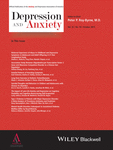ASSOCIATION STUDY BETWEEN OLIGODENDROCYTE TRANSCRIPTION FACTOR 2 GENE AND OBSESSIVE–COMPULSIVE DISORDER IN A CHINESE HAN POPULATION
Abstract
Background
Oligodendrocyte transcription factor 2 (OLIG2) is primarily concentrated in the brain and spinal cord ventricular zone, where this protein stimulates oligodendrocytes and specific neurons, determines motor neuron and oligodendrocyte differentiation, and sustains replication in early development. Recent studies have demonstrated that OLIG2 gene is associated with mental disorders, such as schizophrenia, mood disorder, and obsessive–compulsive disorder (OCD).
Methods
The aim of the present study was to explore whether OLIG2 gene is associated with OCD in a Chinese Han population through the assessment and analysis of three single nucleotide polymorphisms (SNPs), namely, rs762178, rs1059004, and rs9653711, selected from OLIG2 gene sequences from 400 OCD samples and 459 healthy controls in a case-controlled association study.
Results
We demonstrated three principal results. First, SNP rs762178 was associated with OCD, female OCD, and early-onset OCD; rs1059004 was associated with OCD and early-onset OCD; and rs9653711 was also associated with OCD and early-onset OCD. Second, the pairs of loci rs762178 and rs1059004, rs1059004 and rs9653711, and rs762178 and rs9653711 exhibited linkage disequilibrium. Third, the three-locus A-C-G haplotype was associated with early-onset OCD.
Conclusions
The present study is the first to verify the associations of SNPs rs762178, rs1059004, and rs9653711 of the OLIG2 gene with OCD in a Chinese Han population. Thus, OLIG2 might serve as a potential target for OCD treatment in future studies. Further studies should verify the current findings.




